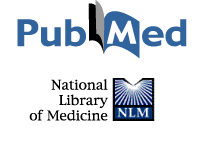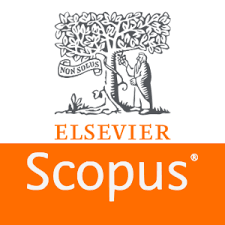ASSESSING GESTATIONAL DIABETES RISK: THE ASSOCIATION OF ABDOMINAL SUBCUTANEOUS FAT THICKNESS IN FIRST TRIMESTER AND GLUCOSE CHALLENGE TEST AT 24-28 WEEKS
DOI:
https://doi.org/10.55519/JAMC-02-14595Keywords:
Gestational Diabetes Mellitus, Abdominal Subcutaneous Fat Thickness (ASFT), Ultrasound, First Trimester, Predictive Factor, OGTT, Diabetes Mellitus.Abstract
Background: Gestational diabetes mellitus (GDM) is a common complication during pregnancy, affecting approximately 3–4% of expectant mothers. This condition increases the risk of postpartum diabetes in mothers and obesity in their children. Moreover, GDM is linked to a higher incidence of infections, pre-eclampsia, eclampsia, and large-for-gestational-age infants, all contributing to perinatal morbidity. This study aimed to examine the association between GDM and abdominal subcutaneous fat thickness (ASFT), with the specific objective of determining a predictive ASFT cut-off value for GDM. Methods: This study was conducted at the Obstetrics and Gynaecology Departments of Pakistan Air Force Hospital, Kamra, and Pakistan Air Force Hospital, Islamabad, between December 2023 and May 2024. The cohort included 288 pregnant women aged 21–35 years, none of whom had diabetes, a history of smoking, hypertension, or metabolic syndrome. Pre-pregnancy body mass index (BMI) and weight gain were recorded, and ASFT was measured via ultrasound. Between 24 and 28 weeks of gestation, participants underwent a 75 g oral glucose tolerance test (OGTT). Data analysis was performed using ROC curve analysis and logistic regression via IBM SPSS version 23.0. Results: Of the 288 participants, 52 (18.05%) were diagnosed with GDM. The mean maternal ASFT was 2.2±0.4 cm, with statistically significant differences observed between the GDM and non-GDM groups (p<0.05). An ASFT threshold of 2.1 cm demonstrated a sensitivity of 76.25% and specificity of 92.57% in predicting GDM. Conclusion: Maternal ASFT measured by ultrasound in the first trimester is a reliable predictor of GDM risk in the second trimester. This parameter may serve as a useful supplementary diagnostic tool for assessing early risk of GDM.
References
1. Tunc S, Oglak SC, Olmez F, Ozkose ZG. The value of first-trimester maternal abdominal visceral adipose tissue thickness in predicting the subsequent development of gestational diabetes mellitus. J Coll Physicians Surg Pak 2022;32(6):722–7.
2. Hou S, Xiao X, Chen D. Ultrasonographic abdominal adipose tissue thickness for the prediction of gestational diabetes mellitus: a meta-analysis. Biomol Biomed 2023;698–707.
3. Dolin CD, Kominiarek MA. Pregnancy in women with obesity. Obstet Gynecol Clin North Am 2018;45(2):217–32.
4. Sweeting A, Wong J, Murphy HR, Ross GP. A clinical update on gestational diabetes mellitus. Endocr Rev 2022;43(5):763–93.
5. Kc K, Shakya S, Zhang H. Gestational diabetes mellitus and macrosomia: a literature review. Ann Nutr Metab 2015;66(Suppl 2):14–20.
6. Reitzle L, Heidemann C, Baumert J, Kaltheuner M, Adamczewski H, Icks A, et al. Pregnancy complications in women with pregestational and gestational diabetes mellitus. Dtsch Arztebl Int [Internet]. 2023 [cited 2024 Jun 30]; Available from: https://www.aerzteblatt.de/10.3238/arztebl.m2022.0387
7. Moon JH, Jang HC. Gestational diabetes mellitus: diagnostic approaches and maternal-offspring complications. Diabetes Metab J 2022;46(1):3–14.
8. Alves JG, Souza ASR, Figueiroa JN, De Araújo CAL, Guimarães A, Ray JG. Visceral adipose tissue depth in early pregnancy and gestational diabetes mellitus a cohort study. Sci Rep 2020;10(1):2032.
9. Bourdages M, Demers MÉ, Dubé S, Gasse C, Girard M, Boutin A, et al. First-trimester abdominal adipose tissue thickness to predict gestational diabetes. J Obstet Gynaecol Can 2018;40(7):883–7.
10. D’Ambrosi F, Crovetto F, Colosi E, Fabietti I, Carbone F, Tassis B, et al. Maternal subcutaneous and visceral adipose ultrasound thickness in women with gestational diabetes mellitus at 24–28 weeks’ gestation. Fetal Diagn Ther 2018;43(2):143–7.
11. Yang SH, Kim C, An HS, An H, Lee JS. Prediction of gestational diabetes mellitus in pregnant Korean women based on abdominal subcutaneous fat thickness as measured by ultrasonography. Diabetes Metab J 2017;41(6):486.
12. American Diabetes Association. Gestational diabetes mellitus. Diabetes Care 2003;26 Suppl 1:S103–5.
13. National Institute for Health and Care Excellence. Diabetes in pregnancy: management from preconception to the postnatal period [Internet]. London: NICE; 2020 [cited 2024 Jun 30]. Available from: https://www.nice.org.uk/guidance/ng3/chapter/Recommendations
14. Berggren EK, Boggess KA, Stuebe AM, Jonsson Funk M. National Diabetes Data Group vs Carpenter-Coustan criteria to diagnose gestational diabetes. Am J Obstet Gynecol 2011;205(3):253.e1–7.
15. Ferrara A, Hedderson MM, Quesenberry CP, Selby JV. Prevalence of gestational diabetes mellitus detected by the national diabetes data group or the Carpenter and Coustan plasma glucose thresholds. Diabetes Care 2002;25(9):1625–30.
16. American Diabetes Association. Standards of medical care in diabetes–2017. Diabetes Care 2017;40 Suppl 1:S1.
17. Petry CJ. Gestational diabetes: risk factors and recent advances in its genetics and treatment. Br J Nutr 2010;104(6):775–87.
18. Teh WT, Teede HJ, Paul E, Harrison CL, Wallace EM, Allan C. Risk factors for gestational diabetes mellitus: implications for the application of screening guidelines. Aust N Z J Obstet Gynaecol 2011;51(1):26–30.
19. Morisset AS, St-Yves A, Veillette J, Weisnagel SJ, Tchernof A, Robitaille J. Prevention of gestational diabetes mellitus: a review of studies on weight management. Diabetes Metab Res Rev 2010;26(1):17–25.
20. Alwash SM, McIntyre HD, Mamun A. The association of general obesity, central obesity, and visceral body fat with the risk of gestational diabetes mellitus: evidence from a systematic review and meta-analysis. Obes Res Clin Pract 2021;15(5):425–30.
21. Eley V, Sekar R, Chin A, Donovan T, Krepska A, Lawrence M, et al. Increased maternal abdominal subcutaneous fat thickness and body mass index are associated with increased cesarean delivery: a prospective cohort study. Acta Obstet Gynecol Scand 2019;98(2):196–204.
22. Fox CS, Massaro JM, Hoffmann U, Pou KM, Maurovich-Horvat P, Liu CY, et al. Abdominal visceral and subcutaneous adipose tissue compartments: association with metabolic risk factors in the Framingham Heart Study. Circulation 2007;116(1):39–48.
23. Björntorp P. “Portal” adipose tissue as a generator of risk factors for cardiovascular disease and diabetes. Arterioscler Thromb Vasc Biol 1990;10(4):493–6.
24. Bazzocchi A, Filonzi G, Ponti F, Albisinni U, Guglielmi G, Battista G. Ultrasound: which role in body composition? Eur J Radiol 2016;85(8):1469–80.
25. Powell-Wiley TM, Poirier P, Burke LE, Després JP, Gordon-Larsen P, Lavie CJ, et al. Obesity and cardiovascular disease: a scientific statement from the American Heart Association. Circulation [Internet]. 2021 [cited 2024 Jun 26];143(21). Available from: https://www.ahajournals.org/doi/10.1161/CIR.0000000000000973
26. Köşüş N, Köşüş A, Turhan N. Relation between abdominal subcutaneous fat tissue thickness and inflammatory markers during pregnancy. Arch Med Sci 2014;10(4):739–45.
27. Kennedy NJ, Peek MJ, Quinton AE, Lanzarone V, Martin A, Benzie R, et al. Maternal abdominal subcutaneous fat thickness as a predictor for adverse pregnancy outcome: a longitudinal cohort study. BJOG 2016;123(2):225–32.
28. Suresh A, Liu A, Poulton A, Quinton A, Amer Z, Mongelli M, et al. Comparison of maternal abdominal subcutaneous fat thickness and body mass index as markers for pregnancy outcomes: a stratified cohort study. Aust N Z J Obstet Gynaecol 2012;52(5):420–6.
29. Won JS. Gestational diabetes mellitus and long-term prognosis of the offsprings. J Korean Diabetes 2020;21(2):81–7.
30. Ornoy A, Becker M, Weinstein-Fudim L, Ergaz Z. Diabetes during pregnancy: a maternal disease complicating the course of pregnancy with long-term deleterious effects on the offspring a clinical review. Int J Mol Sci 2021;22(6):2965.
31. Surendran N, Gupta P, Aggarwal U, Shekhawat P. Assessment of maternal abdominal subcutaneous fat thickness measured by ultrasound as an independent predictor of adverse pregnancy outcomes. Int Intern Med J 2023;1(3):131–5.
32. Lindberger E, Wikström AK, Bergman E, Eurenius K, Mulic-Lutvica A, Lindström L, et al. Associations of ultrasound-estimated early mid-pregnancy visceral and subcutaneous fat depths and early pregnancy BMI with adverse neonatal outcomes. Sci Rep 2021;11(1):4612.
33. Salmen BM, Pietrosel VA, Durdu CE, Salmen T, Diaconu CT, Bica IC, et al. Evaluating the adipose tissue depth as a predictor factor for gestational diabetes in later pregnancy a systematic review. Biomedicines 2023;11(5):1492.
34. De Souza LR, Berger H, Retnakaran R, Maguire JL, Nathens AB, Connelly PW, et al. First-trimester maternal abdominal adiposity predicts dysglycemia and gestational diabetes mellitus in midpregnancy. Diabetes Care 2016;39(1):61–4.
Downloads
Published
How to Cite
Issue
Section
License
Copyright (c) 2025 Adila Anwar, Amina Akbar, Sadaf Afroze, Shakra Tabasam, Shahnaz Sheeba, Ghana Shahid

This work is licensed under a Creative Commons Attribution-NoDerivatives 4.0 International License.
Journal of Ayub Medical College, Abbottabad is an OPEN ACCESS JOURNAL which means that all content is FREELY available without charge to all users whether registered with the journal or not. The work published by J Ayub Med Coll Abbottabad is licensed and distributed under the creative commons License CC BY ND Attribution-NoDerivs. Material printed in this journal is OPEN to access, and are FREE for use in academic and research work with proper citation. J Ayub Med Coll Abbottabad accepts only original material for publication with the understanding that except for abstracts, no part of the data has been published or will be submitted for publication elsewhere before appearing in J Ayub Med Coll Abbottabad. The Editorial Board of J Ayub Med Coll Abbottabad makes every effort to ensure the accuracy and authenticity of material printed in J Ayub Med Coll Abbottabad. However, conclusions and statements expressed are views of the authors and do not reflect the opinion/policy of J Ayub Med Coll Abbottabad or the Editorial Board.
USERS are allowed to read, download, copy, distribute, print, search, or link to the full texts of the articles, or use them for any other lawful purpose, without asking prior permission from the publisher or the author. This is in accordance with the BOAI definition of open access.
AUTHORS retain the rights of free downloading/unlimited e-print of full text and sharing/disseminating the article without any restriction, by any means including twitter, scholarly collaboration networks such as ResearchGate, Academia.eu, and social media sites such as Twitter, LinkedIn, Google Scholar and any other professional or academic networking site.










